August 19 - 25, 2018: Issue 372
STURT NATIONAL PARK – May, 1990
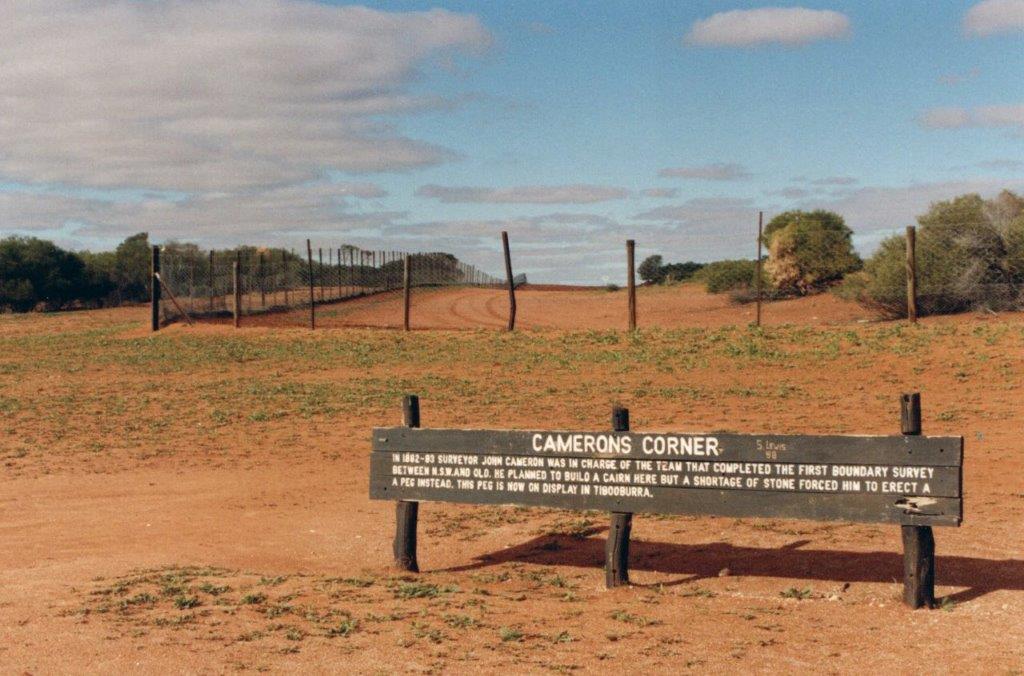
Cameron's Corner.
STURT NATIONAL PARK – May, 1990
By George Repin
Sturt National Park, the driest, most remote of the National Parks of New South Wales, lies in the far north-west corner of the State covering an area of 344,097 hectares. It is arid, semi-desert country with an average rainfall of only 175 mm per year – and that is unreliable. However, when the rain does come it can be torrential, and the unsealed roads within the park quickly become impassable. Access by vehicles then is strictly controlled, not only because of safety considerations but also, when the surface is transformed by the water to mud, vehicles cause considerable damage to the roads.
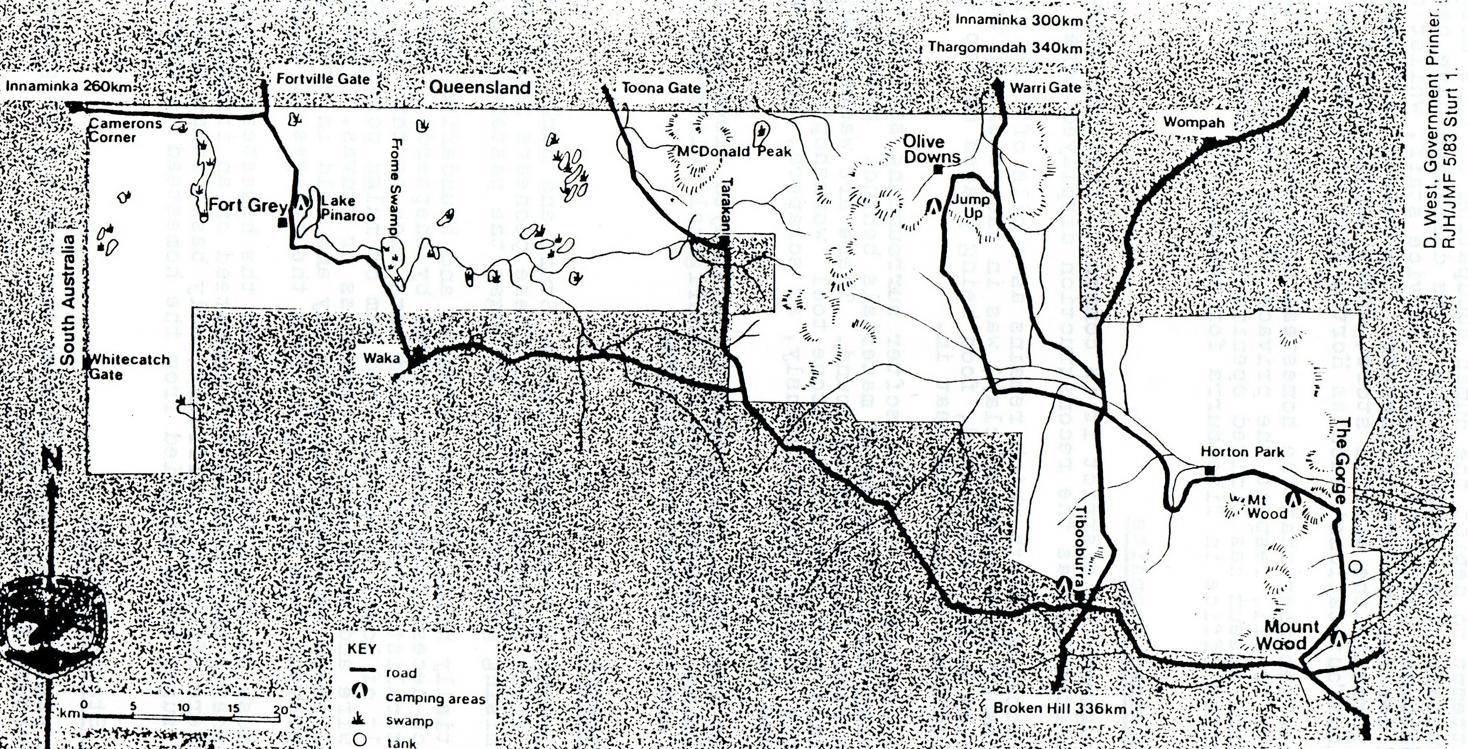
Sturt National Park - map.
The Park is named after Captain Charles Sturt who spent a year in and around the area between 1844 and 1845 in search of the great “inland sea”.
The aim of our group was to travel through the National Park from Tibooburra to the “corner peg” at Cameron Corner. Rains greeted us in Tibooburra.
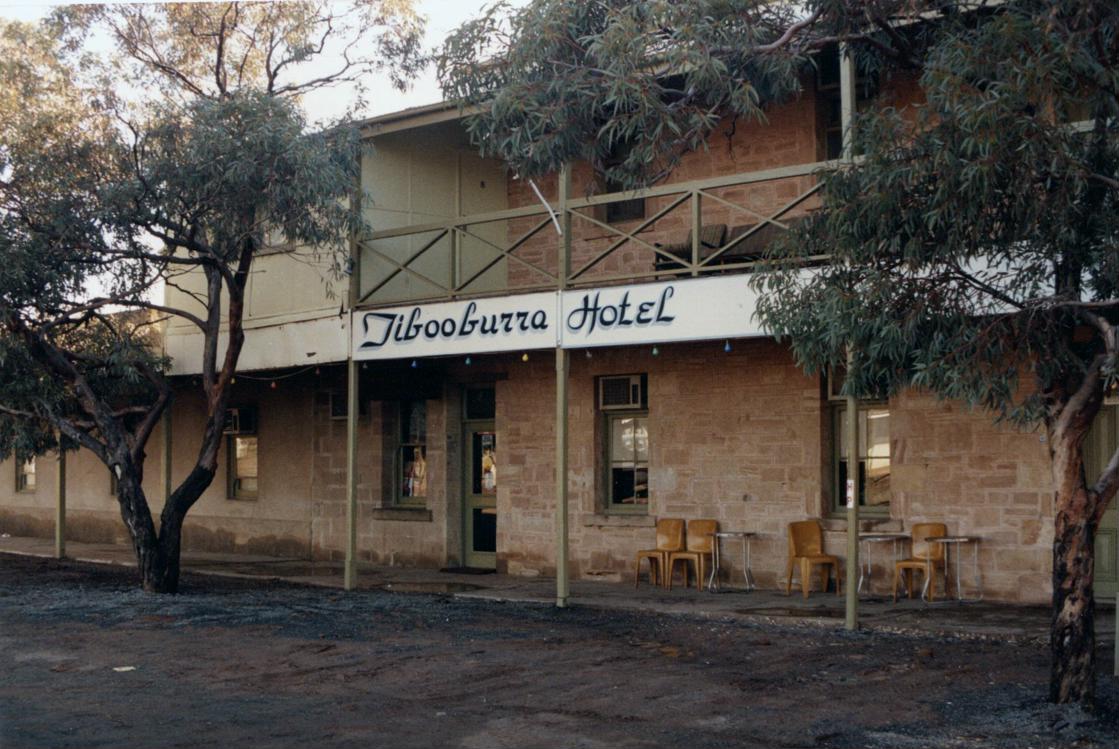
The Tibouburra Hotel.
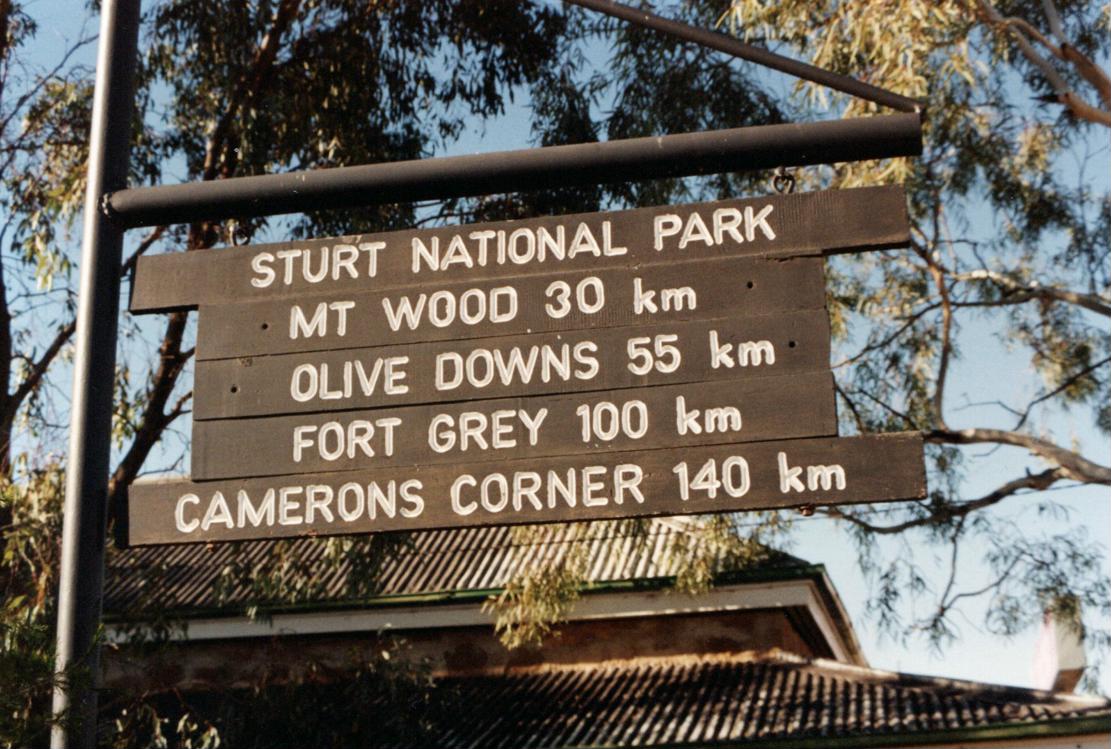
Distances from Tibouburra.
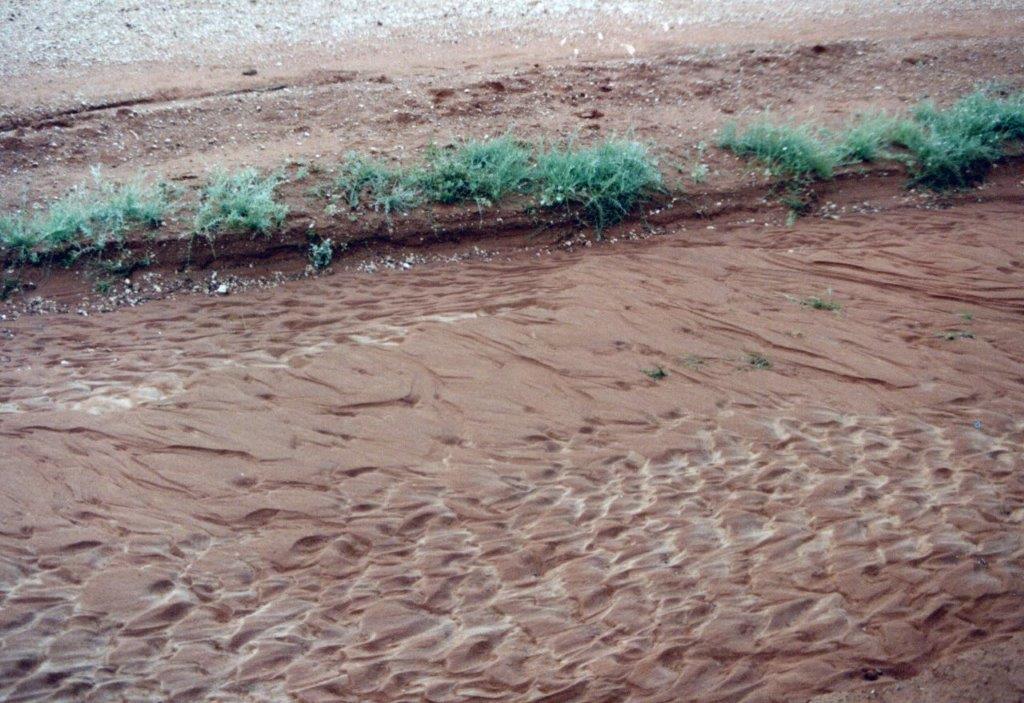
The saturated road surface.
The Park is just north of Tibooburra stretching to the Queensland border in the north and the South Australian border to the west. A smaller section of the Park stretches east to Mt. Wood. Tibooburra means “heaps of rocks” in the local aboriginal language – ancient granite tors surround the town. Payable gold was discovered in April 1881 and up to 2000 diggers flocked to the area, which was named the Granite Diggings, but the shallow gold soon petered out and prospectors left the field.
Sturt National Park is the traditional land of the Wangkumara people who travelled widely through the arid land to make the most of waterholes, permanent soaks, useful plants and animals. Middens and stone relics can be found throughout the park.
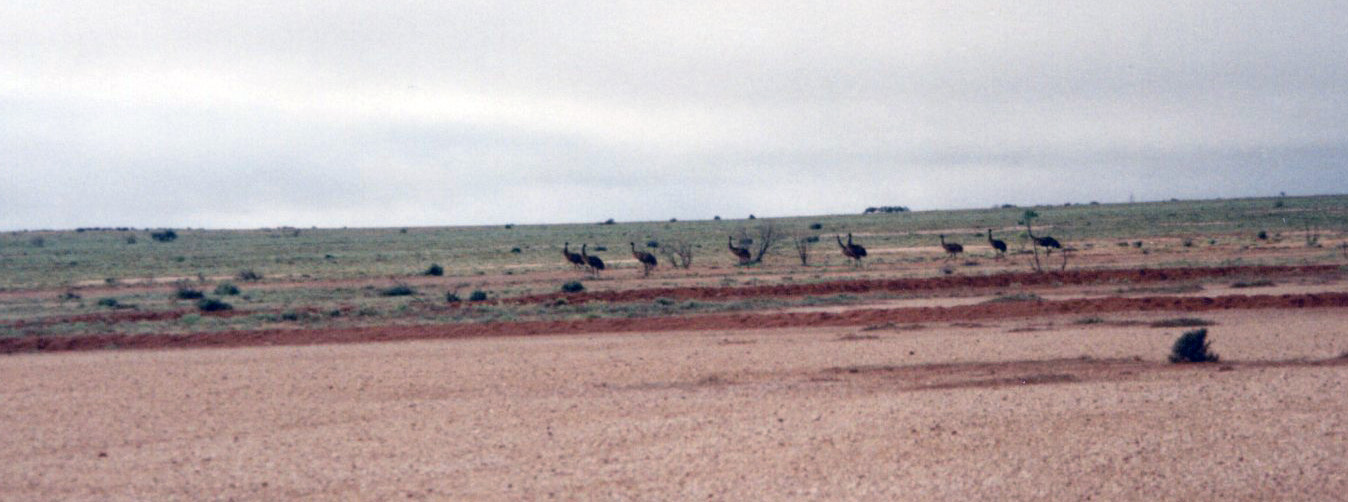
Emus.
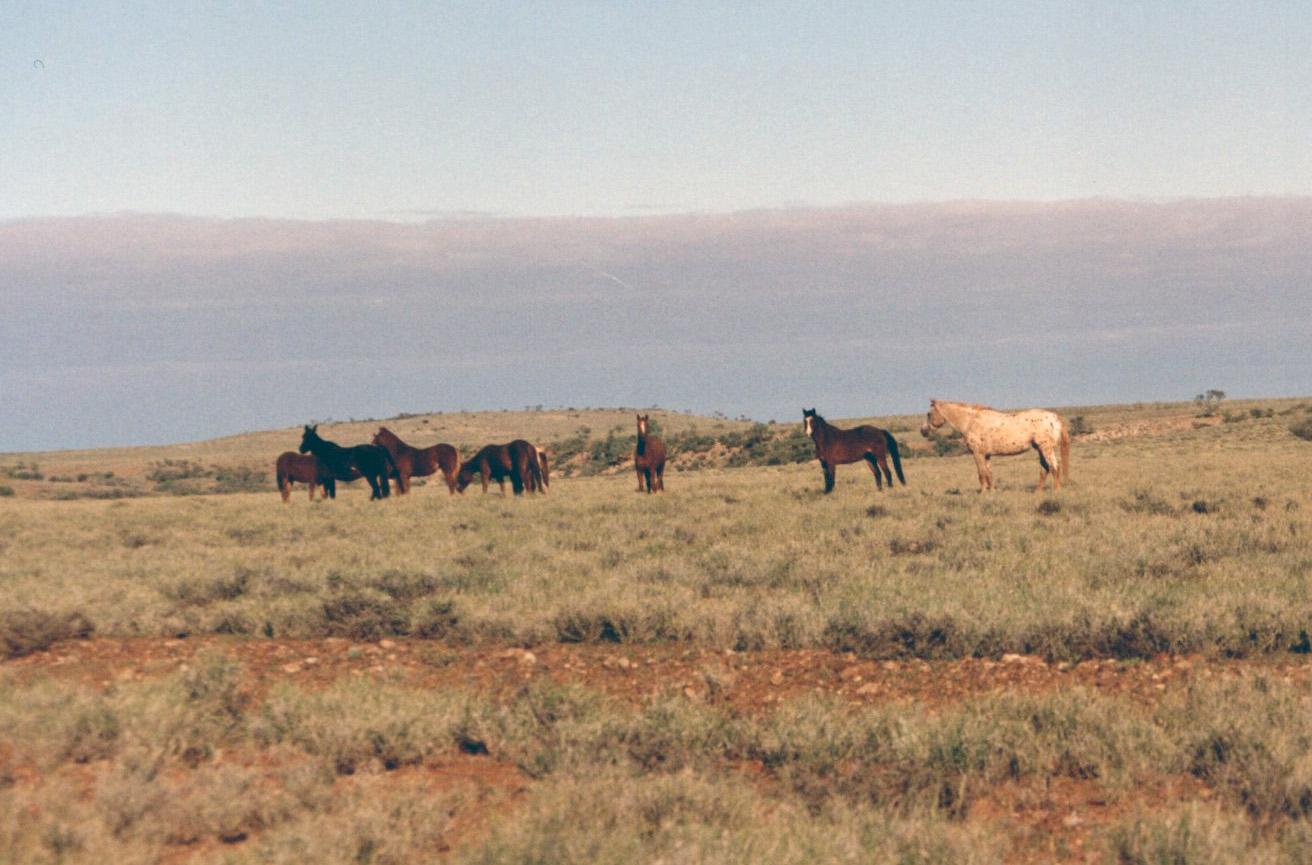
Wild horses.
A wide range of vegetation types are in the Park – woodlands, shrublands, grasslands and swamplands. Major plant communities exist in these habitats, identified by the dominant plant species present. Five habitat types have been identified.
For example there are continuous tracts of red sand/clay plains of stable low dunefields around the Fort Gray area in the west. Throughout the plains and between the dunes are claypans, temporary canegrass/lignum swamp communities and lake basins with characteristic white sand/clay soils. As a contrast, to the east there are Gibber Plains with undulating, stony areas with low shrubs of saltbush, bluebush and tussocks of Mitchell grass. Around Tibooburra are the Granites – the oldest rock formations in the park dating back 450 - 400 million years.
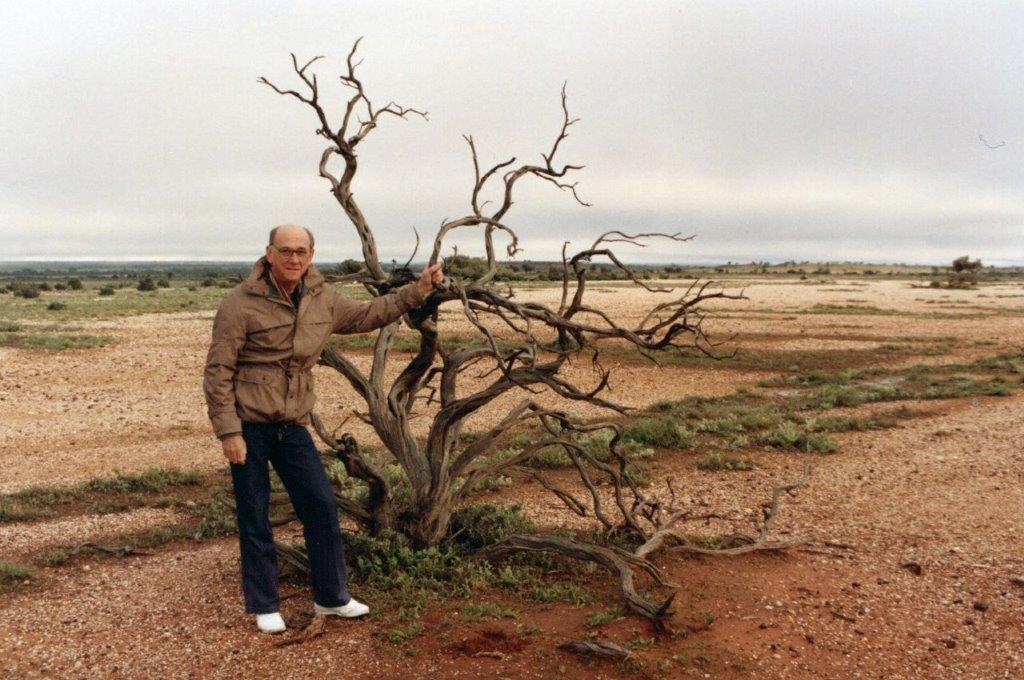
A typical dead tree (on the right!!)
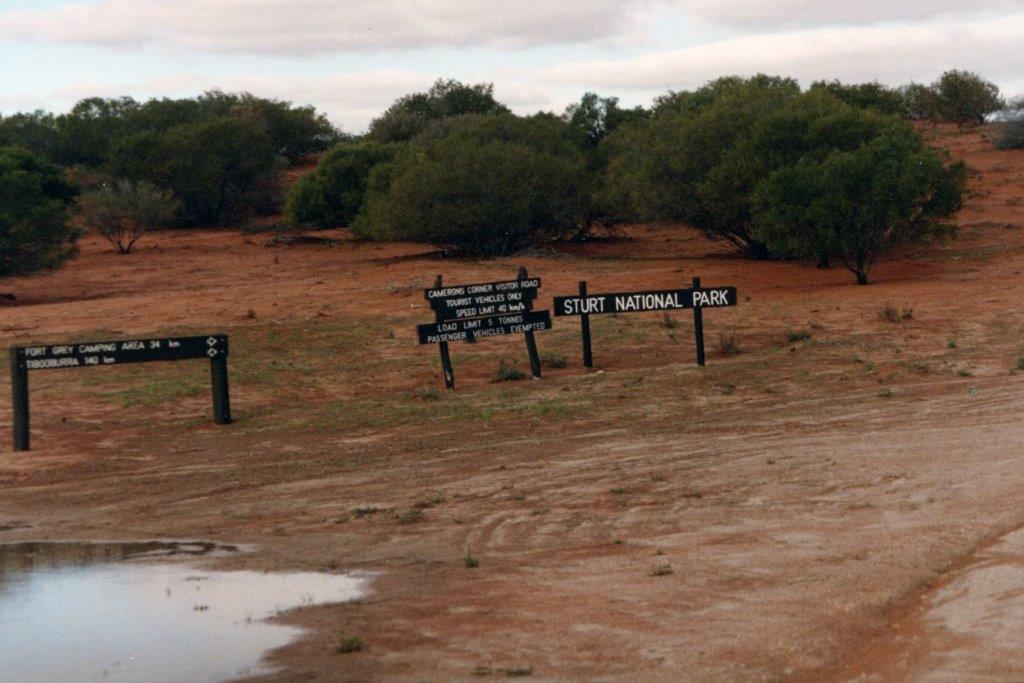
Sturt National Park Information Sign..
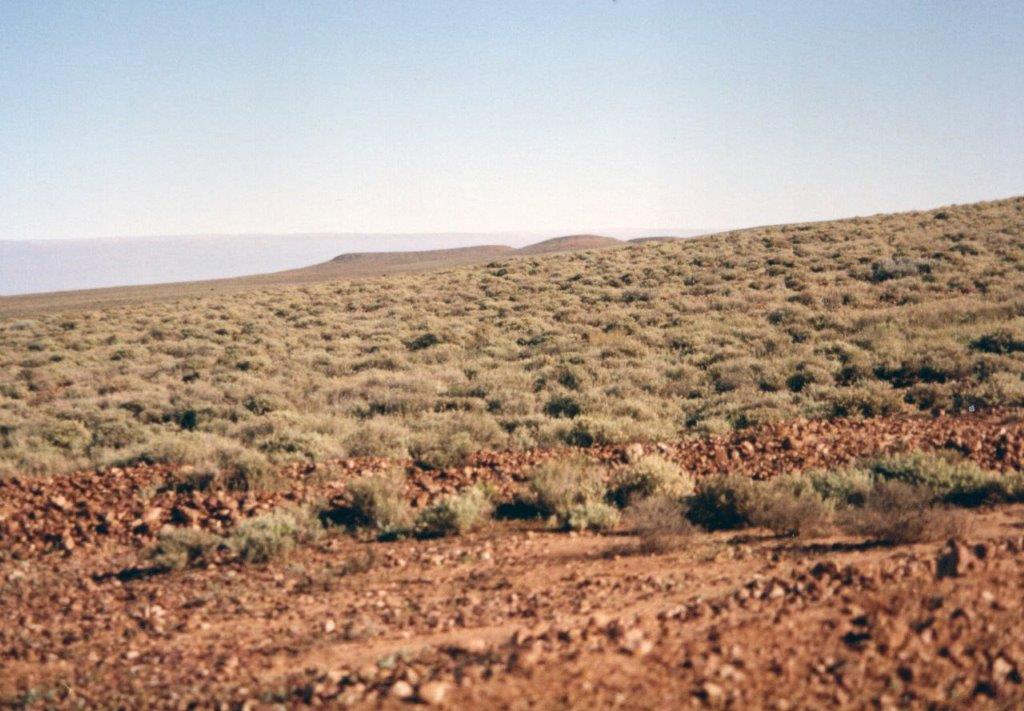
Vegetation on a hillside.
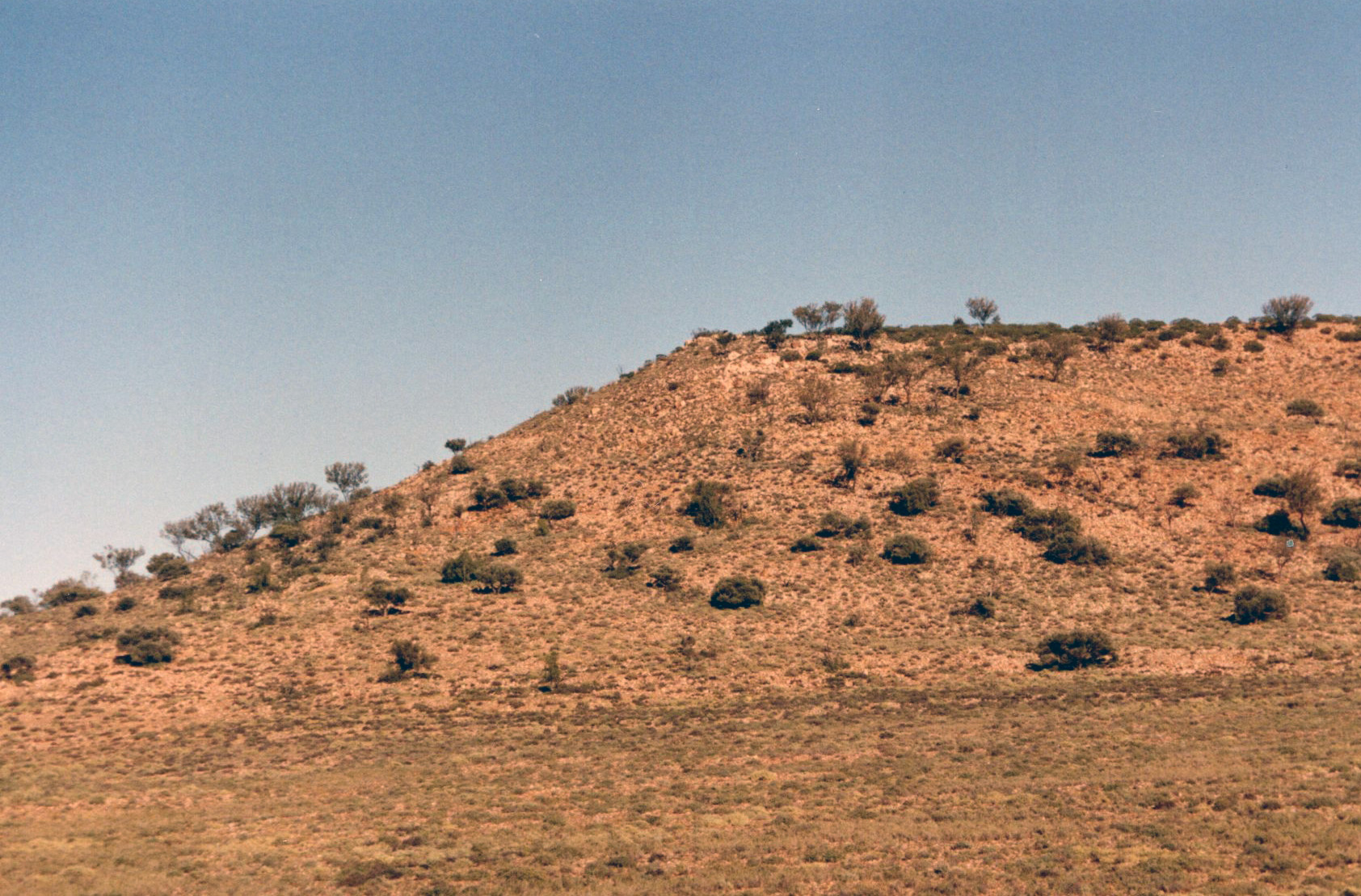
A mesa.
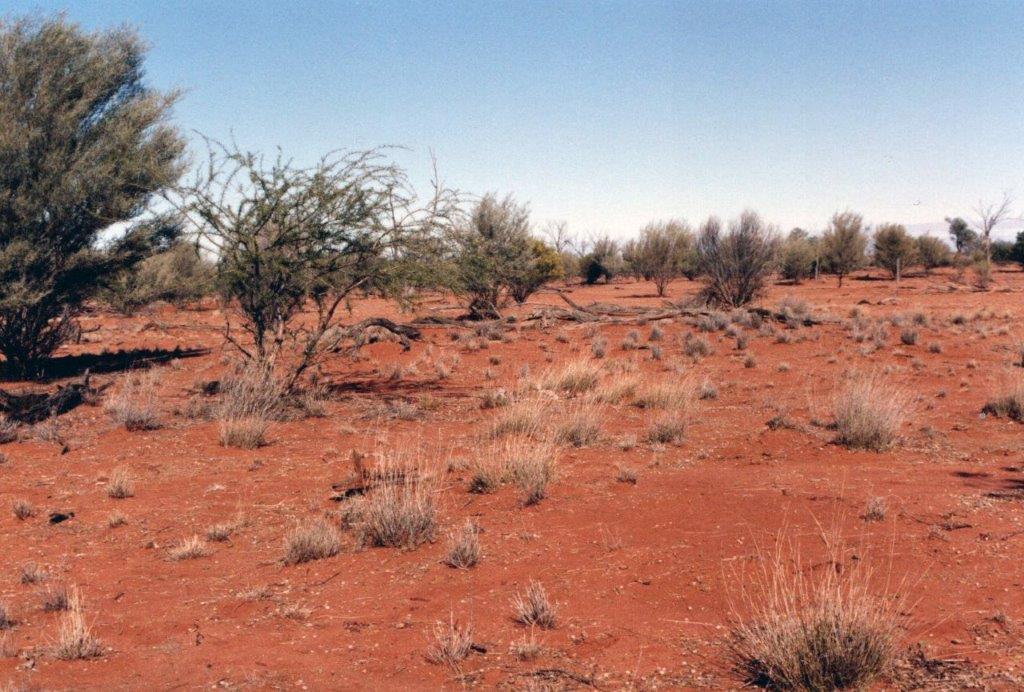
Low shrubs.
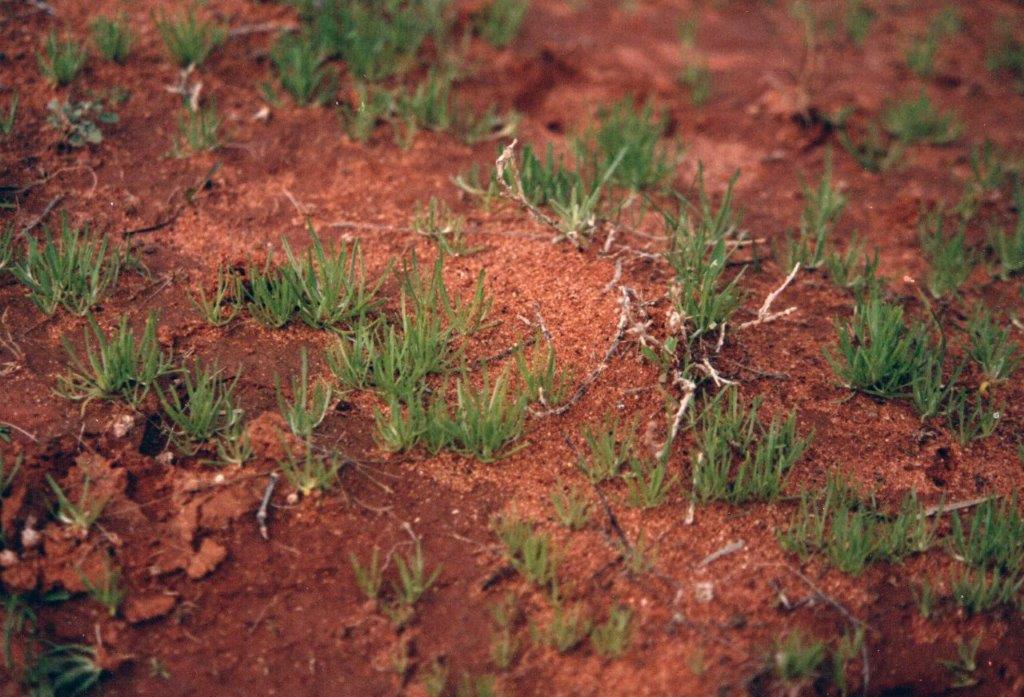
Another variety of small shrub.
Along Frome’s and Twelve Mile Creeks are flood plains of connecting channels near Lake Pinaroo.
Lake Pinaroo is around 80 Km north of Tibooburra and 24 Km south-east of Cameron Corner. It plays a crucial role in the survival of many plants and animal species, and supports large numbers of water birds and waders, including international migratory and threatened species. When full, as we saw it, the Lake is a stunning contrast to the dry landscapes of Sturt National Park.
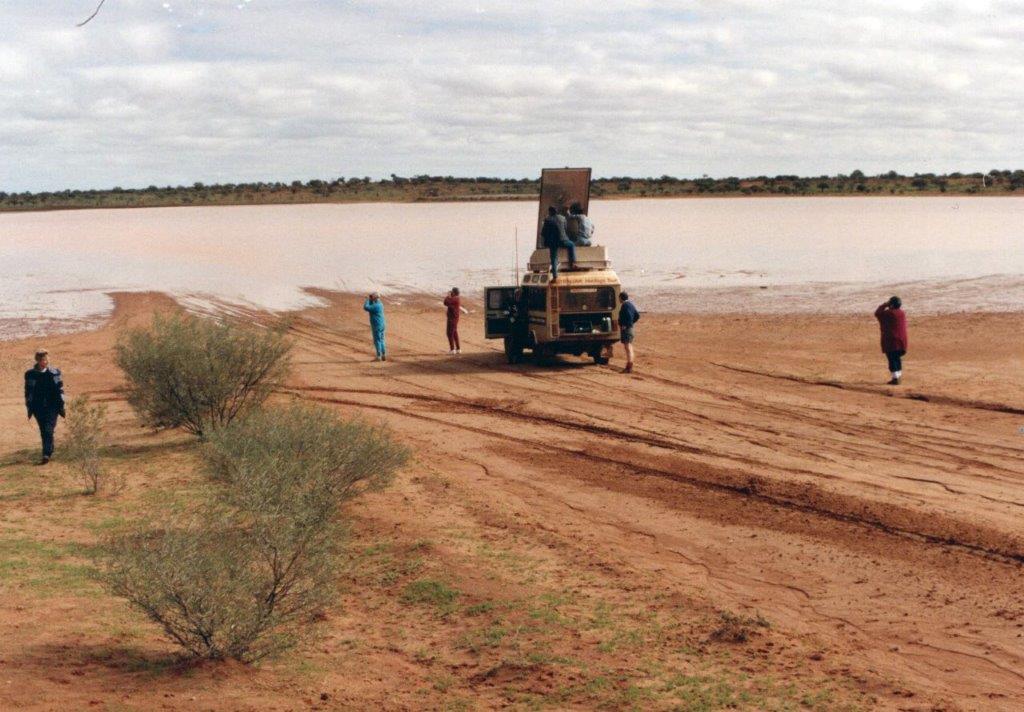
Lake Pinaroo in flood.
Wild life includes Emus - with males up to 2 m high – living in pairs or family groups and Red Kangaroos. The Wedge Tail eagle, Australia’s largest bird of prey with a wing span of 2.5 m may be seen. In season the most famous desert wildflower – Sturt’s Desert Pea – with vibrant red leaf shaped flowers and black centres can’t be missed. It thrives in red sandy soil.
The three states – Queensland, South Australia and New South Wales meet at Cameron Corner. The dingo proof fence, seen well there, runs 360 km along the Queensland border and 270 km along the South Australian border.

Cameron's Corner.
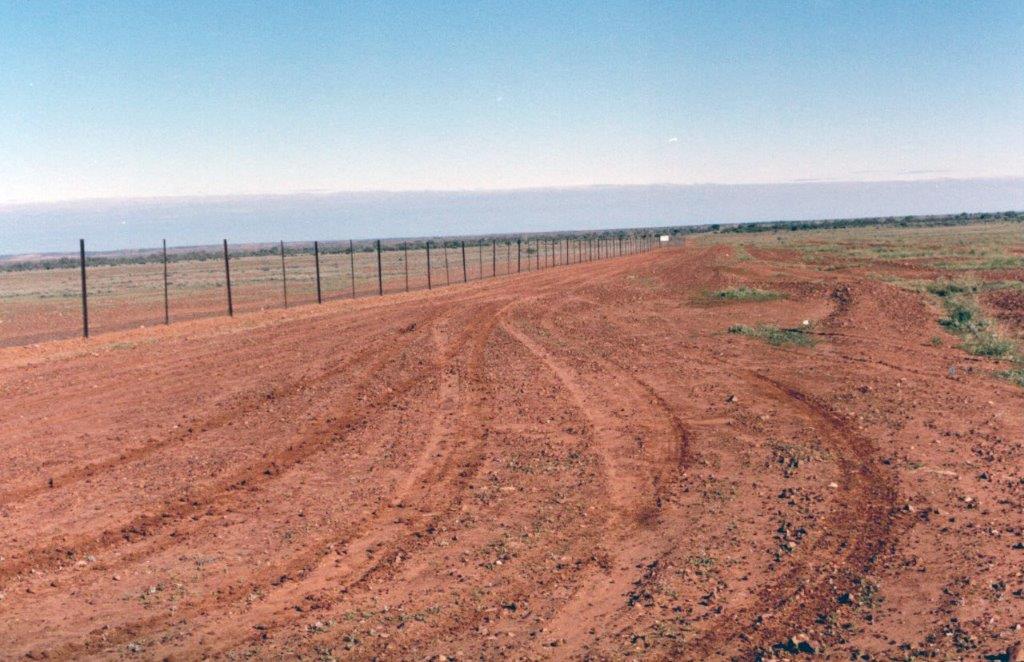
The Dog Fence.
The area, in the unusual conditions of heavy rain in which we saw it, could not have been different from the extreme heat and dryness that faced Charles Sturt.
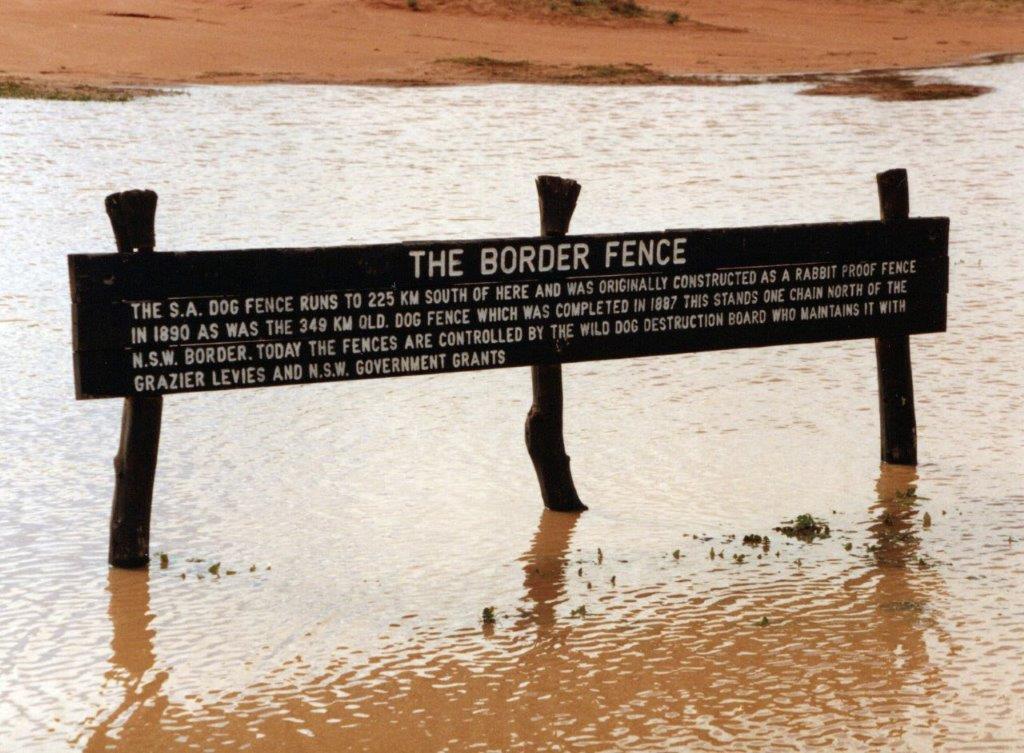
The Border Fence.
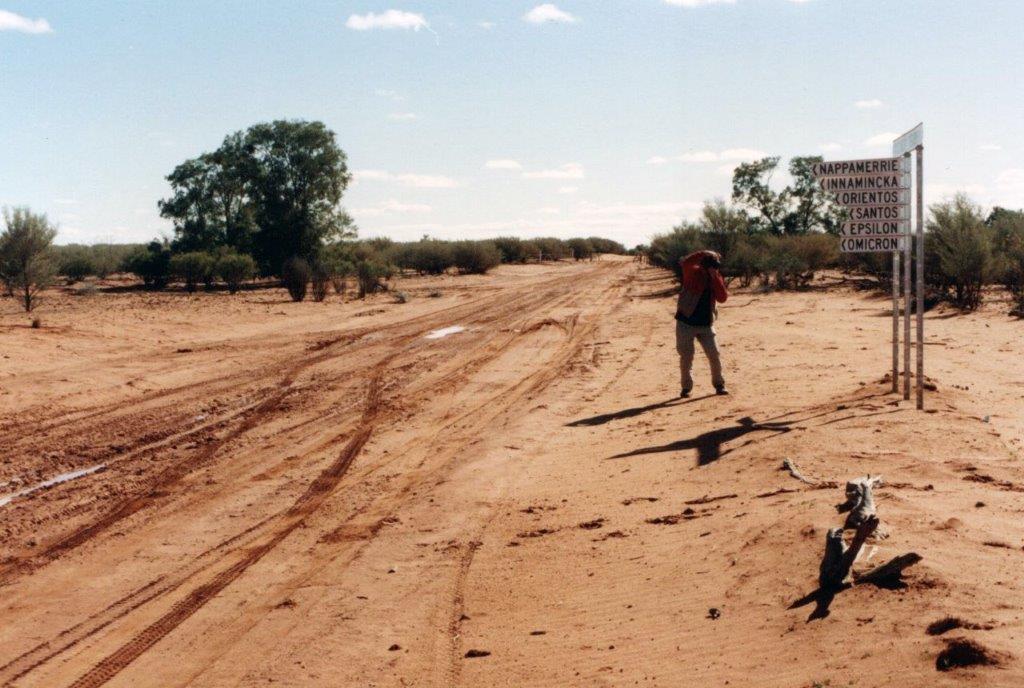
The road east toward Cooper Corner.
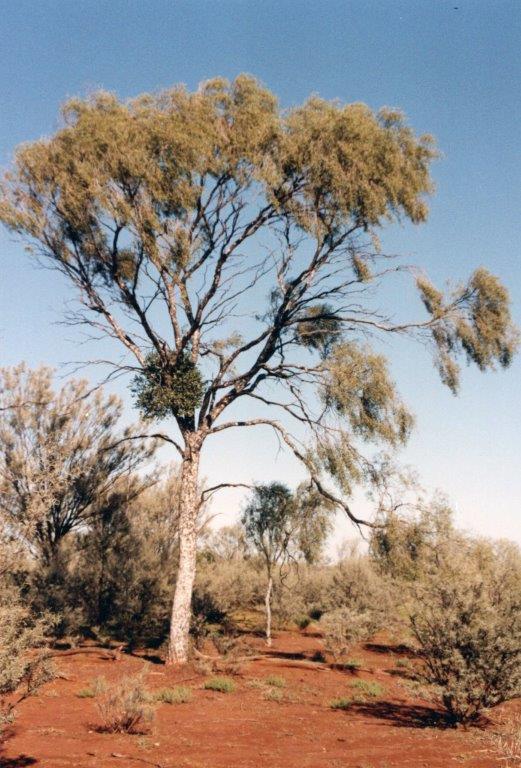
An occasional tree.

The "Corner Peg".
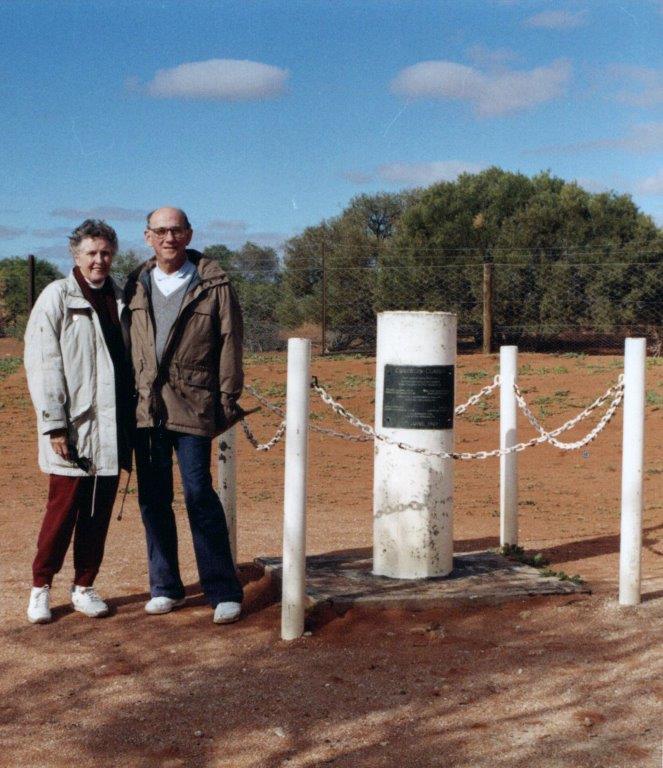
Beside the "Corner Peg" at Cameron Corner.
Photographs by George Repin in May 1990
Previous Reflections by George Repin
The Nineteen Thirties Remembering Rowe Street The Sydney Push Saturday Night at the Movies Shooting Through Like A Bondi Tram A Stop On The Road To Canberra City Department Stores - Gone and Mostly Forgotten An Australian Icon - thanks to Billy Hughes Crossing The Pacific in the 1930s Hill End The Paragon at Katoomba Seafood In Sydney How Far From Sydney? Cockatoo Island Over The Years The Seagull at the Melbourne Festival in 1991 Busby's Bore The Trocadero In Sydney Cahill's restaurants Medical Pioneers in Australian Wine Making Pedal Power and the Royal Flying Doctor Service Pambula and the Charles Darwin Connection Gloucester and the Barrington Tops A Millenium Apart Have You Stopped to Look? Gulgong Il Porcellino Olympia Durham Hall Sargent's Tea Rooms Pie Shops and Street Photographers The Ballet Russes and Their Friends in Australia Hotels at Bondi Alma Ata Conference - 1978 Keukenhof - 1954 The Lands Department Building and Yellowblock Sandstone The Goroka Show - 1958 A Gem On The Quay Staffa The Matson Line and Keepsake Menus Kokeshi Dolls The Coal Mine At Balmain The Hyde Park Barracks The Changing Faces Of Sydney From Pounds and Pence to Dollars and Cents Nell Tritton and Alexander Kerensky Making A Difference In Ethiopia William Balmain J C Bendrodt and Princes Restaurant Azzalin Orlando Romano and Romano's Restaurant Waldheim Alcohol in Restaurants Before 1955 King Island Kelp The Mercury Theatre Around Angkor - 1963 Angkor Wat 1963 Costumes From the Ballets Russe Clifton at Kirribilli Chairman Mao's Personal Physician The Toby Tavern The MoKa at Kings Cross The Oceaographic Museum in Monaco The Island of Elba Russian Fairy Tale Plates Meteora Souda Bay War Cemetery Barrow, Alaska Cloisonné Tripitaka Koreana Minshuku The Third Man Photographs and Memories Not A Chagall! Did You Listen? Did You Ask? Napier (Ahuriri, Maori) New Zealand Borobudur Ggantija Temples Plumes and Pearlshells Murano University of Padua Ancient Puebloe Peoples - The Anasazi Pula The Gondolas of Venice Cinque Terre Visiting the Iban David The Living Desert Bryce Canyon National Park Aphrodisias The Divine Comedy Caodaism Sapa and local Hill People A Few Children Cappadocia Symi Jean-Marie Tjibaou Cultural Centre Aboriginal Rock Art on Bigge Island ANZAC Cove (Ari Burnu) 25 April, 1997 Hotere Garden Oputae Children of the Trobriand Islands Page Park Market - Rabaul Rabual Kotor, Montenegro Galleries of Photographs I Lascaux Galleries of Photographs II The Cathedral of St. James – Šibenik, Croatia Ivan Meštrović - Sculptor Delphi Gallery of Photographs III The Handicrafts of Chiang Mai Raft Point San Simeon - "Hearst Castle" Floriade - The Netherlands - 1982 Russian New Year Mycenae "Flightseeing" Out Of Anchorage Alaska The White Pass and Yukon Route Totem Poles Tivkin Cemetery Krka National Park - Croatia Tavistock Square and the BMA Orthodox Easter Wieliczka Salt Mine A Walk on Santorini Indonesian Snapshots Ephesus - The Library of Celsus Ephesus - Some Places Of Interest Waimea Canyon and the Kalalau Valley United Nations Headquarters 1958 A Miscellany of Flower Images Gardens Bath St. David's In Wales Zion National Park Nicholas Himona - Artist Kraków Lilianfels Collonges-La-Rouge Gingerbread Houses Cape Sounion Delos Wroclaw Colonial Williamsburg Gruyères Strasbourg Coventry Cathedral The Roman Theatre at Aspendos Turkish Carpets The Duomo of Orvieto Rovinj The City Walls of Dubrovnik Monaco - Snapshots Bonifacio, Corsica Autumn in New England USA The Great Ocean Road Pompeii Didyma Lawrence Hargrave 1850-1915 The Corinth Canal Malta Snapshots of Amsterdam Café Central - Vienna The Forbidden City - Beijing, China A Ride on the Jungfrau Railway - 1954 Snapshots in the Highlands of Scotland 1954 Must See Sights in Paris - 1954 Corfu Reflections On the Nineteen Thirties The Gold Souk in Dubai Stromboli Ha Long Bay Vietnam Lake Argyle The Bungle Bungle Range Langgi Inlet, W.A. White Cliffs, NSW - 1990
Copyright George Repin 2018. All Rights Reserved.